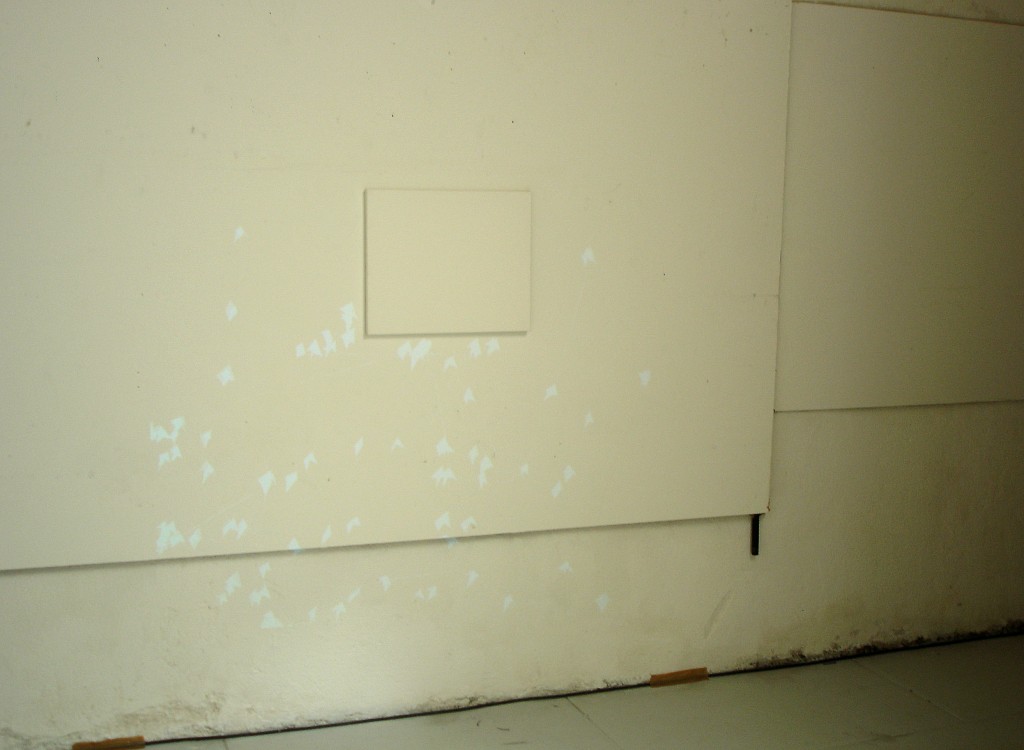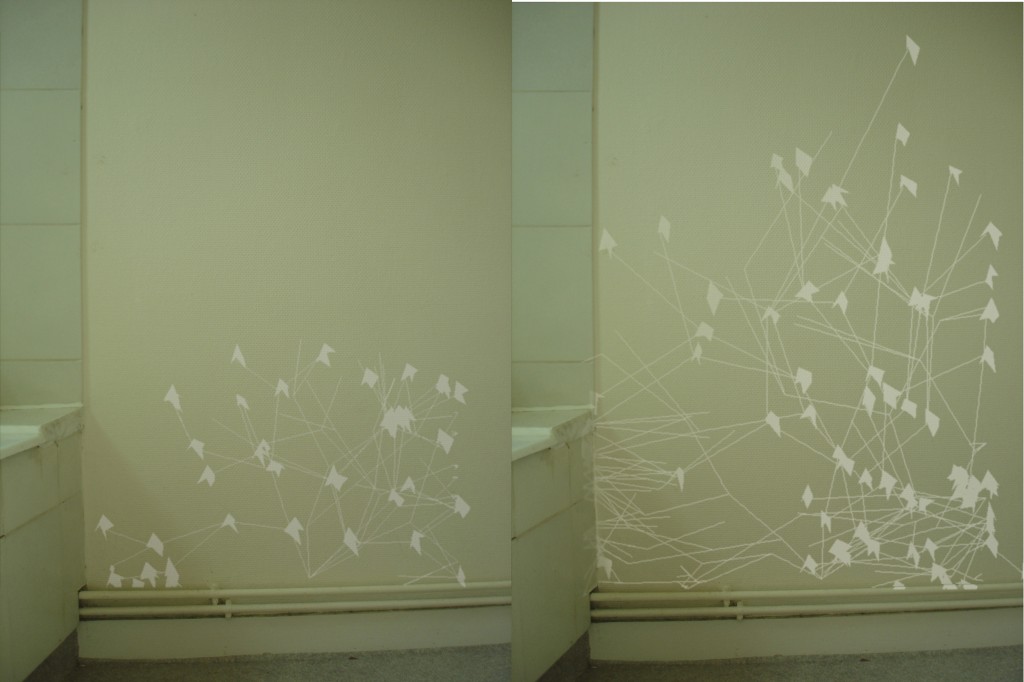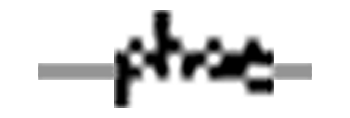
Le lierre, végétal parasitaire, poussant sur n’importe quel mur en s’y adaptant aisément, rappelle l’image électronique qui se développe sur des surfaces très variables (web, écran, projection...). Le projet a donc démarré avec ce motif minimal de lierre avec l’idée d’un papier peint, une unité de base modulaire indépendante de la surface de projection. Mais cela n’était qu’un motif, sans autre motif qu’être éventuellement décoratif.
D’un autre côté le graphisme, construit par un algorithme calculé en temps-réel, pouvait se développer chaque fois différemment, et c’est là que j’en situais le plaisir contemplatif. N'assumant pas son caractère décoratif, le projet a suivi son cours vers une installation interactive, mais avec le constat que nombre de celles-ci répondent seulement à l’attente du spectateur d’être celui qui anime quelque chose, d’être source de vie. Ainsi il a été préféré une interaction “négative” avec le son : lorsque du bruit est présent dans la pièce, le lierre se rétracte vivement et échappe au regard du spectateur. Mais si ce dernier reste silencieux pendant un moment, le lierre pousse de nouveau, chaque fois différemment, pour s’étendre lentement sur le mur. Ainsi un jeu peut s’établir entre l’image et le spectateur qui doit se conformer au rythme du lierre s’il veut pouvoir contempler son invasion progressive du mur.
Plus tard, dans un lieu d’exposition conventionnel (un white cube) l’installation a pris une nouvelle tournure : une toile vierge sur châssis était installée au mur, le lierre ne se développant qu’autour du « tableau », inversant « ce qu’il faut voir ».
D’un autre côté le graphisme, construit par un algorithme calculé en temps-réel, pouvait se développer chaque fois différemment, et c’est là que j’en situais le plaisir contemplatif. N'assumant pas son caractère décoratif, le projet a suivi son cours vers une installation interactive, mais avec le constat que nombre de celles-ci répondent seulement à l’attente du spectateur d’être celui qui anime quelque chose, d’être source de vie. Ainsi il a été préféré une interaction “négative” avec le son : lorsque du bruit est présent dans la pièce, le lierre se rétracte vivement et échappe au regard du spectateur. Mais si ce dernier reste silencieux pendant un moment, le lierre pousse de nouveau, chaque fois différemment, pour s’étendre lentement sur le mur. Ainsi un jeu peut s’établir entre l’image et le spectateur qui doit se conformer au rythme du lierre s’il veut pouvoir contempler son invasion progressive du mur.
Plus tard, dans un lieu d’exposition conventionnel (un white cube) l’installation a pris une nouvelle tournure : une toile vierge sur châssis était installée au mur, le lierre ne se développant qu’autour du « tableau », inversant « ce qu’il faut voir ».
The ivy, this parasitic plant, growing on and easily adapting to any surface, reminds us the electronic image that can be displayed on various surfaces (web, screen, projection... ). The project thus started with this minimal ivy pattern and the idea of wallpaper, a modular base unit independent from its projection surface. But this was a pattern, possibly existing for no other motive than to be decorative.
Otherwise, the graphics, built by a realtime algorithm could develop differently each time, and this is where I located the contemplative pleasure. By not assuming its decorative sides, the project has run its course towards an interactive installation, but noting that many of them only match the expectations of the viewer to be the one that animates something, to be the source of life. So it was preferred a "negative" interaction with sound : when noise is present in the room, the ivy sharply retracts and escapes the sight of the passer-by. But for the one who remains silent for a moment, the ivy grows again, each time differently, and slowly spreads over the wall. A playing may then settle between the image and the viewer, who must comply with the rhythm of the ivy if it wants to contemplate the progressive invasion of the wall.
Later, in a conventional exhibition space (a white cube) the installation has taken a new twist : a blank canvas was mounted on the wall, and now the ivy grows up only around it, reversing what is “to be seen”.
Otherwise, the graphics, built by a realtime algorithm could develop differently each time, and this is where I located the contemplative pleasure. By not assuming its decorative sides, the project has run its course towards an interactive installation, but noting that many of them only match the expectations of the viewer to be the one that animates something, to be the source of life. So it was preferred a "negative" interaction with sound : when noise is present in the room, the ivy sharply retracts and escapes the sight of the passer-by. But for the one who remains silent for a moment, the ivy grows again, each time differently, and slowly spreads over the wall. A playing may then settle between the image and the viewer, who must comply with the rhythm of the ivy if it wants to contemplate the progressive invasion of the wall.
Later, in a conventional exhibition space (a white cube) the installation has taken a new twist : a blank canvas was mounted on the wall, and now the ivy grows up only around it, reversing what is “to be seen”.


